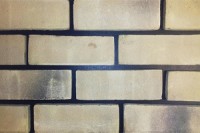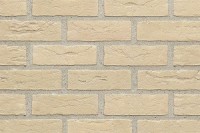Brick matching options
Before starting my brick extension I didn’t appreciate how many different types, sizes, colours and textures of brick there are. It’s not until you try and match the brickwork of an existing structure with a new one such as an extension you realise that there are hundreds of types of brick out there. With the age of different properties and different architectural styles, finding matching bricks can be a daunting prospect. I was lucky that my builder had a solid background as a bricklayer, so knew his montanas from his strombolis and could match a brick pretty quickly.
Type of brick – engineering or facing
There are basically two types of brick both of which are likely to be used in an extension and would feature in the existing property, engineering bricks and facing bricks. It is only the facing bricks that need to be matched, because the engineering bricks are usually concealed within the building.
Engineering Brick – as the name suggests, a more ‘practical’ brick laid in the interests of more structural rigidity. Class A and B types are the basic options with Class B being the more widely used although Class A offer higher compressive strength and are less water absorbent – Class A bricks are sometimes used in damp courses.
Appearance is less of a priority with engineering bricks – indeed, many haven’t been rigorously inspected for chipping and there are often variances in colour tone from one brick to the next. Compared to the multitude of facing brick types, this building supplies company offers less of a selection of engineering bricks.
Facing Brick – as the name suggests, these bricks are used for areas of a structure that are readily seen such as exterior walls. Facing bricks won’t possess the structural attributes of engineering bricks, but are available in a wide variety of colours, textures and sizes to achieve the exact appearance required.
Brick Types
Bricks to suit modern extensions or those to blend in with an older property are available ‘off the shelf’ from builders supply companies as shown in the link above.
Red Brick – there’s plenty of varieties available up to and including the more sandy shades, and some are smooth or heavily textured. Some have different shades of individual brick often described as a ‘multi’ type, or even different shades of red in the same brick.
 Cottage, Farmhouse and ‘Rustic’ Bricks – if you own an older property, then bricks in keeping with its style even if building a new extension are available often in several different versions. These bricks are characterised by no one brick seeming to be like another with various colours ranging from paler shades to red and even black featuring in the same batch.
Cottage, Farmhouse and ‘Rustic’ Bricks – if you own an older property, then bricks in keeping with its style even if building a new extension are available often in several different versions. These bricks are characterised by no one brick seeming to be like another with various colours ranging from paler shades to red and even black featuring in the same batch.
It’s possible to match the brickwork even more accurately to the property with appropriate coloured mortars, too. These period style bricks often go under the names of ‘reclaimed cottage,’ ‘rustic,’ ‘old farmhouse’ or similar.
 Sandy and grey – when an extension is designed for newer style properties built perhaps in the 1970s or 1980s, the ‘grey’ here is actually more of a buff colour. Bricks with more ‘blended’ shades and a more rounded off style might be more suitable for older properties.
Sandy and grey – when an extension is designed for newer style properties built perhaps in the 1970s or 1980s, the ‘grey’ here is actually more of a buff colour. Bricks with more ‘blended’ shades and a more rounded off style might be more suitable for older properties.
The Right Specification
Once you’ve found a brick you like – or more likely matches your existing property – you need to check the specification of your chosen brick is suitable.
Your architect and builder should be able to check this for you, but factors such as compressive strength and water absorption play a part even though these are facing as opposed to engineering bricks where strength and water absorption capabilities are usually more important. Brick suppliers display their various brick styles on their websites so you can often find a close match just by browsing. Weight of the bricks used could be a factor to consider as this may need to combine with the foundation provisions.
Exact Brick Matching
Despite the huge number of brick sizes, shapes, textures and colours available you may not be able to fully match the bricks used in your existing property. If this is the case, then all is not lost as it may be possible to track down bricks of the same – or very similar – type.
Your first option is to seek the help of the Brick Development Association who can help put you in touch with a manufacturer; if you know who originally manufactures your bricks so much the better of course.
Having bricks specially made may not prove as prohibitively expensive as you might think, and again the above link will provide you with brick manufacturers to try. Again, your architect or builder may be able to help as they may have ideas as to who would have made the type of bricks used in your property.
Staining Brickwork
If you simply can’t find an exact match of brick, an option is to stain your new bricks to match the existing ones. After choosing the best possible bricks to match, you’d then have them stained – or tinted – to ‘fine tune’ the colour match.
You’d need to check carefully before taking this course of action. While doing it yourself is possible, using a specialist company is probably the best bet, and make sure they’re prepared to test a few bricks first to ensure the process will be effective.
The bricks you choose will need to be absorbent enough to take the dye, so consider this before settling on the exact brick type.
Whether buying ‘off the shelf’ or having to search further, you should be able to find the brick for your extension that best matches your property.
More Resources:
- https://www.homebuilding.co.uk/brick-tinting/
- http://forterra.co.uk/resources/news/article/2014/10/what-is-an-engineering-brick-and-when-should-i-use-one
- https://www.travisperkins.co.uk/Product/Building-Materials/Bricks+Blocks/Facing-Bricks/c/1500031?q=%3Arelevance&page=0&perPage=120
- https://www.travisperkins.co.uk/Product/Building-Materials/Bricks+Blocks/Engineering-Bricks/c/1500032
- http://www.wisegeek.com/what-are-facing-bricks.htm
- http://www.georgelines.co.uk/building-materials-2/engineering-brick/
- http://www.masonrymagazine.com/brick-matching-101/
- http://www.brick.org.uk
- http://www.telegraph.co.uk/lifestyle/interiors/jeffhowell/3351093/On-the-level-where-do-I-get-bricks-to-match-my-house.html
- http://thisisbuildingmaterials.blogspot.co.uk
